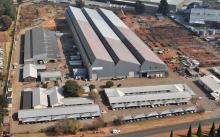The 2018 financial year proved to be a challenging year for South African mining companies. Globally, the financial performance of the mining industry improved considerably from the previous year. That position was largely mirrored by South African bulk commodity producers with iron ore, coal, manganese and chrome performing well. Unfortunately the aggregated SA mining industry, which is more exposed to precious metals, did not enjoy the same benefit from price increases. These are some of the key highlights from PwC’s 10th edition of SA Mine, a series of publications that highlights trends in the South African mining industry.
Michal Kotzé, PwC Africa Energy Utilities & Resources leader, says: “2018 can be described as a mixed bag of performance for South Africa’s mining industry, with bulk commodity prices continuing to rise during 2018 from the lows at the beginning of 2016, while precious metals continued to struggle.
“Cost-saving initiatives could not offset the impact of input cost inflation. The increased costs and production challenges meant a weakening in operating results. Together with the gold and platinum impairments, it meant that the industry recorded a loss for 2018.”
PwC’s 10th edition SA Mine analysis continues: “For the first time since 2012, capital expenditure grew as the completion of long-term platinum and gold projects continues, while older and inefficient shafts are being closed.
While the new mining charter underlined the regulatory uncertainty, the appointment of a new minister of mineral resources in February 2018 brought hope of open dialogue and more certainty to the industry.
Although the gazetted version of the charter is likely to still receive some criticism, there was a concerted effort by industry and government to move closer to each other. Environmental regulatory changes are also receiving deserved attention.”









